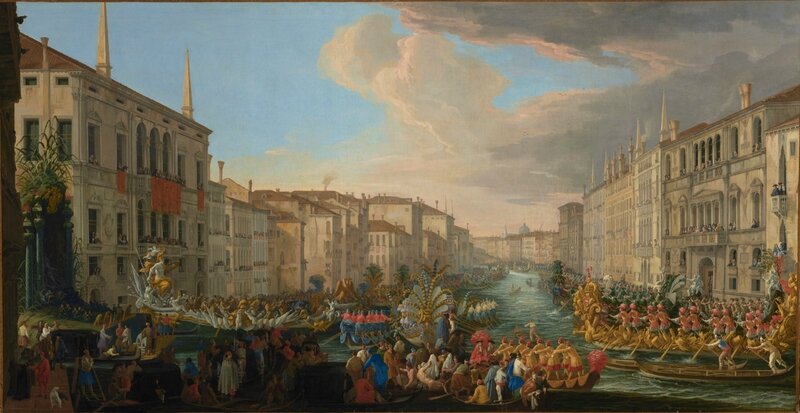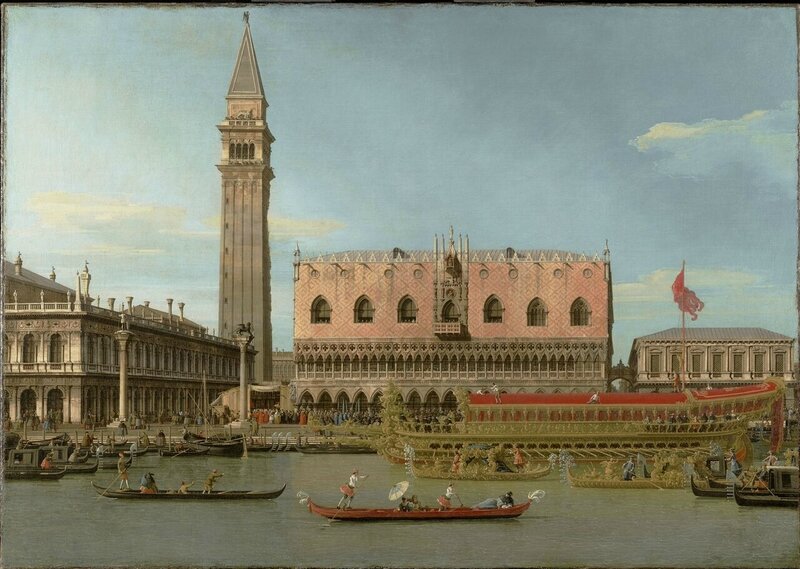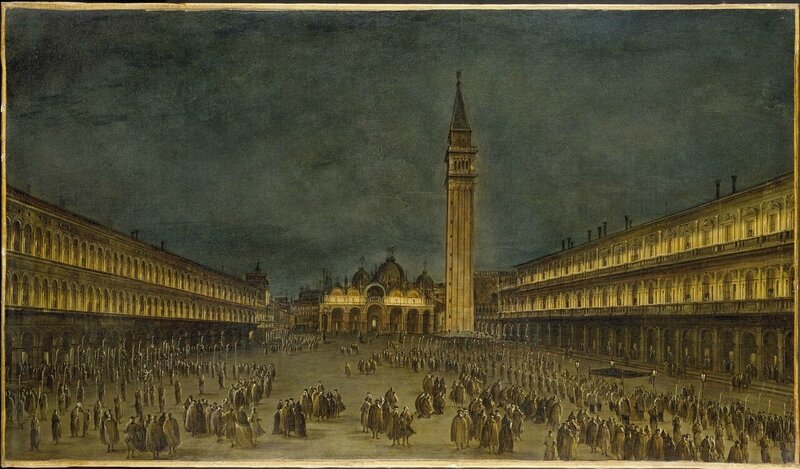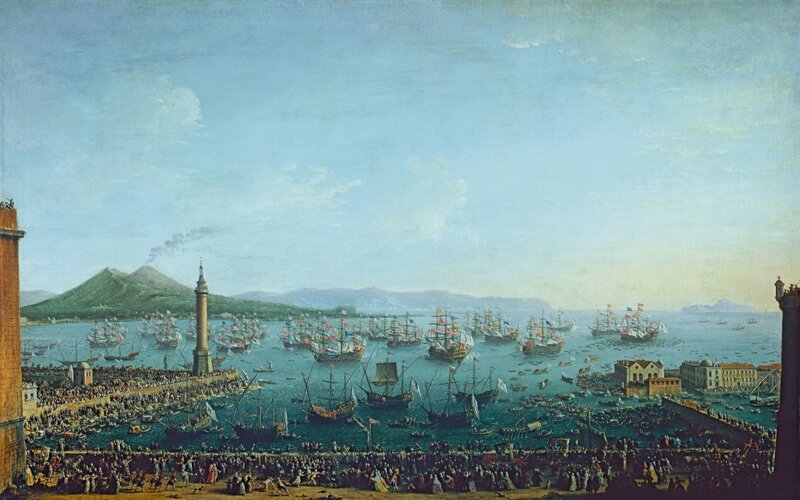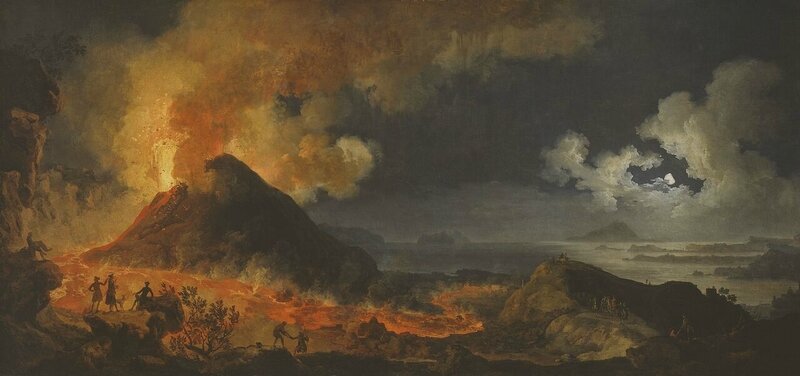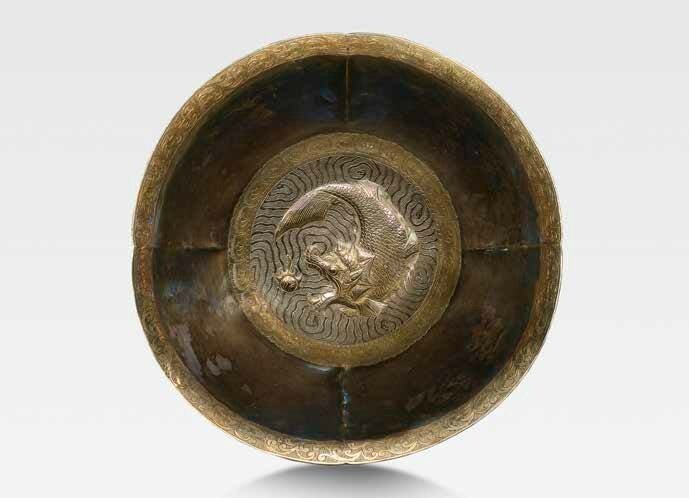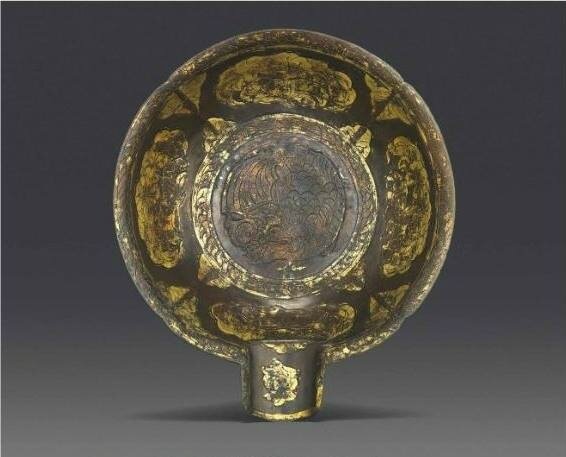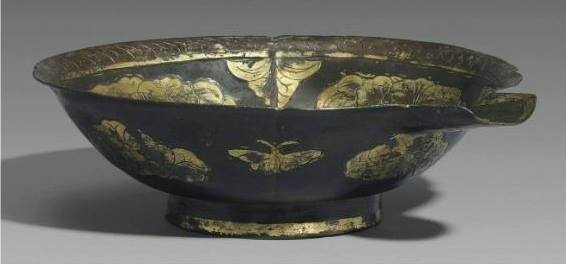![1519589681-Asia-preview-banner]()
FORT WORTH, TX.- This spring, the Kimbell Art Museum presents the U.S. debut of From the Lands of Asia: The Sam and Myrna Myers Collection. This exhibition will feature nearly 450 objects from this remarkable collection, with works representing key periods in the history of the art of China, Japan, Tibet, Mongolia, Korea and Vietnam.
"In following their passion, Sam and Myrna Myers have assembled one of the finest Asian art collections ever amassed," commented Eric M. Lee, director of the Kimbell Art Museum. "These objects create a rich, complex and magical tapestry----a panoramic history of Asian cultures from ancient times to modern days."
When Sam Myers was sent to Paris by his law firm in the mid-1960s, he and his wife Myrna became so enamored with the city that they decided to make it their home. There, over the course of 50 years, they built an extraordinary collection that until now has never been exhibited publicly in the United States. Beginning by acquiring Greek and Roman antiquities but eventually focusing on Asia, the Myers assembled some 5,000 works that offer a very personal vision of the world of Asian art.
The exhibition covers a broad historical range, from the Neolithic era to the 20th century. The objects are also highly varied in nature, from porcelain, ivory and precious stones such as jade and rock crystal to Buddhist art and textiles and stunning costumes from Central Asia, Tibet, China and Japan. Each treasure is exceptional in its shape, rarity, quality, function or inherent message. The exhibition recounts fascinating historical events through themes such as the symbolism of Chinese jade, the trade in blue-and-white porcelain, Buddhism, Noh theater, the Japanese samurai, the tea ceremony and the scholar's studio.
"This exhibition provides a unique opportunity for visitors to experience a journey of discovery----much as the Myers did over the course of 50 years of collecting----through an extraordinarily diverse and impressive range of Asian works of art," said Jennifer Casler Price, the Kimbell's curator for Asian and non-Western art.
While Paris was their center, the initial spark for the Myers' collecting was the small town of Ascona, Switzerland, where the couple arrived on vacation quite by chance. It was in 1966, during their first visit, that they discovered Casa Serodine, an antique gallery owned by Dr. Wladimir Rosenbaum (1894--1984), an erudite dealer who became their mentor. He helped them realize that, despite limited means, it was possible to acquire authentic works of art.
The exhibition begins with a selection of classical antiquities illustrating the couple's earliest forays into collecting, including works from Egypt, Greece, Rome and the Middle East. From the time of those acquisitions on, the Myers were driven by their shared passion for art, which became an organizing principle for the rest of their lives. As their experience and expertise grew, enhanced by their scholarly bent and numerous travels throughout the world, they became irresistibly drawn to the art of Asia. Their collection eventually focused on four principal areas, which constitute the main themes of the exhibition.
"Costumes and Customs" presents an ensemble of sumptuous robes dating from the 16th through 19th centuries that illustrate several major chapters in the history of Asian textile art. From China, where silk fabrics reflected the wearers' wealth and social status, the collection features a rare complete scholar's robe and an imperial prince's armor. Japan is represented by a range of kimonos, among the most elegant garments in the world, as well as by luxurious Noh theater costumes and samurai attire adapted for wearing armor. Central Asian textiles include a Tibetan dance outfit and prime minister's jacket and flamboyantly colorful Ikat garments from Uzbekistan. Complementing these costumes will be a selection of Japanese lacquerware and tea ceremony implements, as well as accessories used in a Chinese scholar's studio.
![dancers_robe_ex]()
Dancer's Robe, Tibet, 18th century. Silk brocade. The Sam and Myrna Myers Collection. Photo by Thierry Ollivier.
The exclusivity of Chinese silk made it a coveted commodity and an instrument of diplomacy for foreigners. Lavish gifts, as well as authorized commerce, helped maintain alliances. The Chinese practice of bestowing gifts and titles on Tibetan religious leaders and of sanctioning trade in luxury goods began in the thirteenth century and lasted into the seventeenth century, and imperial patronage of Tibetan Buddhism continued throughout the Qing dynasty (1644–1911).
Many of the textiles sent to Tibet were originally produced for the Chinese court. They were often drawn from textiles amassed by the imperial household and held in reserve for such purposes. Although highly prized, garments and furnishing fabrics were often recut to fit Tibetan costume styles or to serve new functions. This robe, worn by Tibetan monks who performed masked cham dances on major religious festivals, was recut from a Chinese dragon robe in order to strategically position the dragon ornament.
![20-243]()
Khalat, Central Asia, Uzbekistan, Late 19th century, Embroidered silk. The Sam and Myrna Myers Collection. Photo by Thierry Ollivier.
The peoples of Central Asia knew how to brighten the desert with an explosion of silk colors. With accomplished techniques of dying and embroidery, they embellished robes, accessories, and wall hangings. These pieces illustrate the renaissance of textile arts in the nineteenth century in towns along the ancient Silk Road. The weaving centers in Uzbekistan each had its own particular styles and colors. The artisans making these garments belonged to different ethnic groups and their customers came from all social strata.
For a thousand years, the merchants and riders who traveled the steppes wore the same style of tunic, pantaloons, and long robe, called a khalat. They had a fondness for flamboyant silks with motifs that evoked amulets, jewels, flowers, and fruit. The more worked khalat were generally lined with Central Asian tie-dyed and woven ikat cloth. They were often finished with bands of contrasting embroidery, which served as borders and resulted in surprising juxtapositions.
![19-258]()
Jimbaori, Japan, Edo period, 18th century. Silk, 101 x 105 cm. The Sam and Myrna Myers Collection. Photo by Thierry Ollivier.
Samurai warriors gained increasing prominence in Japan during the twelfth century, establishing political control in the name of the emperor as well as a feudal system based on personal alliances and the development of a samurai code of honor. From 1192 to 1867, shoguns (military dictators) controlled the country. Samurai clothing developed naturally in relation to their armor, which was articulated and made of leather, plaques of iron, bronze, lacquer, and silk cords. Other than clan emblems (mon) and symbols of strength, they bore few decorative elements.
Reserved for only the greatest samurai, the jinbaori is a ceremonial vest worn over the armor and is a symbol of the samurai’s prowess and rank. Plumes, imported wool, or tapestry were among the exotic materials used to make these garments. The simple, red, graphic Ko symbol, found on the reverse side of the imported black wool and in the poplin lining, represents the family crest (mon) of a samurai clan. In the Edo period, these designs were placed on garments as symbols of rank.
![21b1e65124b1bf6d58b33b122b7f93a1]()
Long-Sleeved Kimono, Japan, Edo period (1603–1868). Embroidered silk. The Sam and Myrna Myers Collection. Photo by Thierry Ollivier.
A long garment worn by both women and men since the sixteenth century, the kimono is Japan’s emblematic garment. Its t shape is made from four strips of fabric folded in half and sewn together to form the sleeves and body of a robe that opens in front. Reduced to its essential form, the kimono is surprisingly modern and provides an ideal background for decorative motifs that are often unique, drawn from a limitless iconography.
The name furisode means “swinging sleeves.” These long-sleeved kimonos identified the wearer as a girl or an unmarried woman and were worn for formal occasions such as weddings, ceremonies, and visits to temples. The typical bright colors and lavish decoration called public attention to their wearers. The elaborately stenciled, dyed, painted, and embroidered patterns on this furisode allude to the amorous pursuits of princely courtiers celebrated in The Tale of Genji, depicting a view, through clouds, of bamboo blinds and curtains seen from flower-filled gardens.
![18-245_01]()
Nō robe, Japan, Edo period, 18th century, 149 x 142 cm. The Sam and Myrna Myers Collection. Photo by Thierry Ollivier.
![113569074]()
Noh actor. Painted wood. Japan, Momoyama period (1573–1603). The Sam and Myrna Myers Collection. Photo by Thierry Ollivier.
![Scholar’s robe, China, Ming dynasty, 15th c]()
Scholar’s robe, China, Ming dynasty, 15th century, 133 x 245 cm. The Sam and Myrna Myers Collection. Photo by Thierry Ollivier.
![17-244]()
Chaopao, Qing dynasty, Kangxi period, 18th century, 134 x 218 cm. The Sam and Myrna Myers Collection. Photo by Thierry Ollivier.
"An Ocean of Porcelain" illustrates 500 years of blue-and-white porcelain production in China through pieces that demonstrate a diverse range of forms and decoration. The earliest piece in the Myers collection is a rare and unusual 14th-century Yuan dynasty meiping vase. Trade with the Middle East and Islamic influence are evident in several examples of 15th- and 16th-century Ming dynasty vessels. The fascination in Europe with porcelain led to a thriving maritime commerce, first with the Portuguese in the 16th century and then with the Dutch in the 17th century. Forty years ago, the first shipwreck with Chinese porcelain was found----a discovery that was soon followed by increasingly well-documented underwater excavations. The Myers' collection of items from a mid-17th century cargo vessel includes some of the best Transitional-period porcelain ever recovered from the ocean floor.
![Meiping Vase, China, Yuan dynasty (1279–1368), 14th century]()
Meiping Vase, China, Yuan dynasty (1279–1368), 14th century. Porcelain, blue-and-white ware, 40 cm. The Sam and Myrna Myers Collection. Photo by Thierry Ollivier.
The Yuan dynasty changed the course of history by introducing the new technique of applying underglaze cobalt blue to white porcelain made in Jingdezhen in Jiangxi Province. Ceramics, which had been the art of clay, became the art of the brush. From the mid-fourteenth century, ceramic artists excelled in animal and floral representations. Making porcelain became an industry which, in turn, evolved into international commerce.
The orderly decoration of this meiping, in three horizontal registers separated by double lines, is evidence of the division of tasks and the specialization of the workers at the principle kiln centers in Jiangxi province, which were under imperial control. Above the panel of lotuses that surround the narrow foot, there is a central frieze of dragons amid clouds, the symbol of the emperor. The fluidity of the bodies covered with scales, the spines that outline their backs, and their aggressive claws accentuate their power. On the broad shoulders, amid floral scrolls, there are flying phoenixes.
![Ewer, China, Ming dynasty (1368–1644), 16th century]()
Ewer, China, Ming dynasty (1368–1644), 16th century. Porcelain, blue-and-white ware. The Sam and Myrna Myers Collection. Photo by Thierry Ollivier.
When the Mongol Yuan dynasty toppled, the Chinese reclaimed control of their territory, establishing the Ming dynasty. During Ming reign, blue-and-white porcelain continued to play a key role. Adopted by the court, it was coveted by scholars, gained widespread popularity, and was exported around the world. It is the reflection of Ming China’s influence and the personalities of each of the dynasty’s emperors.
Blue-and-white porcelains of the Jiajing period (1522–1566) have a characteristic, somewhat violet hue, obtained from mixing local cobalt with imported material. The cobalt is used in a very concentrated form, resulting in dark blue contours against the background, rather than more graduated color changes. This technique is particularly noticeable in this “magic fountain” ewer. The ewer’s form fits perfectly with pieces destined for the Middle East, though its decoration reflects European influence. It may derive from European Renaissance documents now lost and is therefore a pivotal piece meant for both European and Middle Eastern clients.
![Phoenix kendi, China, Ming dynasty (1368–1644), 16th century]()
Phoenix kendi, China, Ming dynasty (1368–1644), 16th century. Porcelain, blue-and-white ware, 23.5 cm. The Sam and Myrna Myers Collection. Photo by Thierry Ollivier.
Kendi are evidence that many of the pouring vessels made in Jingdezhen during the Ming dynasty were destined for the Middle East and Southeast Asia. The term kendi is derived from the Sanskrit kundika, meaning a vase from which one drinks without touching the lips. Fourteenth-century kendi were bulbous vases with a spout and a tubular neck. By the sixteenth century, their bases had become more elegant, often resting on a foot, and their shoulders more marked, with long necks that narrowed at the opening. The first Europeans to be attracted to the strange appearance of kendi were the Portuguese.
Jingdezhen potters had great imagination for plastic arts and created kendi in the forms of dragons, phoenixes, buffalos, and toads. This phoenix kendi is an exceptional piece—a rare object that is both functional and mysterious, like this hybrid creature, which has fascinated the Chinese since antiquity.
![Brushpot with Snow Scene, China, Transitional period, 17th century, Hatcher Collection, Chinese junk sunk 1646, discovered 1983]()
Brushpot with Snow Scene, China, Transitional period, 17th century, Hatcher Collection, Chinese junk sunk 1646, discovered 1983. Porcelain, blue-and-white ware, 19.5 cm. The Sam and Myrna Myers Collection. Photo by Thierry Ollivier.
In 1984, news of Captain Michael Hatcher’s discovery of the shipwreck of a Chinese junk in the South China Sea with twenty-five thousand pieces of porcelain from the sixteenth and seventeenth centuries was astounding. Perhaps destined for a Dutch merchant ship anchored in Jakarta or Formosa, the cargo included a type of blue-and-white porcelain known as Transitional ware, as it was made in the late seventeenth century, between the Ming and Qing dynasties.
During this troubled period, the abandonment of official control of porcelain production meant that potters were free from the previous constraints of court taste to innovate and satisfy the desires of clients from popular, bourgeois, and intellectual classes. A range in new and original forms of Transitional ware was accompanied by an enlargement of subject matter and a greater liberty in the manner in which the decoration was executed. Themes were borrowed from popular literature, from landscape painting, or from album leaves of birds and flowers. A definitive figurative language developed, breaking with the symbolism of the preceding dynasty.
![Plate, China, Transitional period, 17th c]()
Plate, China, Transitional period, 17th century, Hatcher Collection. Porcelain, blue-and-white ware, 19.8 cm. The Sam and Myrna Myers Collection. Photo by Thierry Ollivier.
The introduction of Buddhism can be considered one of the major events that defined Asia, being both a spiritual and artistic revolution. "A Thousand Years of Buddhism" traces the spread of the religion from its origins in northern India to China, Tibet, Korea and Japan, with a superb selection of carved stone and wood images, metal sculptures and paintings. The collection includes a significant number of Buddhist textiles such as appliquéd, embroidered and patchwork thangkas, mandalas, banners and liturgical garments. These transcendent works reveal that as each of these cultures embraced the Buddhist faith, they created a religious art imbued with their own unique aesthetic utilizing indigenous materials.
![2cb95cea0b8ca68a86ccb6e072b26b13]()
Bodhisattva Guanyin, China, Song dynasty, c. 1125. Polychromed wood, 103 cm. The Sam and Myrna Myers Collection. Photo by Thierry Ollivier.
Chinese Buddhism reached its zenith under the Tang dynasty (AD 618–906), and it was during this period that Buddhist sculpture realized a masterful adaptation of foreign Indian style to indigenous traditions. During the Song dynasty (AD 960–1279), Buddhist sculpture continued to develop in wood and stucco, with the introduction of greater naturalism to depict deities such as the ever-popular bodhisattva of compassion, Guanyin.
In this sculpture, the divinity is seated in the meditative attitude of “royal repose,” with the right hand resting on the raised right knee and the left hand on a book, presumably a sutra. Originally, the figure would have been placed on a sculpted wooden rock or mountain. The model for this sculpture is likely based on images in eighth-century Tang dynasty paintings. During the Song dynasty, there was frequent collaboration between painters and sculptors to satisfy demands for images, which resulted in a greater sense of anatomical accuracy. The fluidity of the sculpture is evident in the juxtaposed curves of the drapery, the calligraphic flow of the scarves, and the sophistication of the jewelry.
![197699099b74708ed18993dd102c4711]()
Amida Buddha, Japan, Kamakura period (1185–1333). Bronze. The Sam and Myrna Myers Collection. Photo by Thierry Ollivier.
Buddhism during the late Heian period (897–1185) was characterized by the marked increase in the worship of Amida Buddha and his Western Pure Land Paradise, which became even more widespread during the Kamakura period (1185–1333). The belief of practitioners in this esoteric Buddhist sect is that ritual invocation of Amida’s name was sufficient to gain admittance into his Western Paradise. Numerous temples were consecrated and filled with images of Amida Buddha.
The most spectacular example, in Kamakura, features a monumental bronze image of Amida Buddha, dated 1252. Seated in meditation, his face is treated geometrically and is framed by ears with extended earlobes and hair in spirals, and he wears a monastic robe carefully placed to reveal his lightly modeled chest—all features found on this Amida Buddha. This figure also shares the same plasticity, its solidity reinforced by its seated position. The cascading robe that covers his lower body, the breadth of his torso, and the rounded geometry of his face all give this representation a real presence, tempered by the almost abstract drapery.
![agaraja, Tibet, Densatil, 15th c]()
Nagaraja, Tibet, Densatil, 15th century. Bronze., 37 cm. The Sam and Myrna Myers Collection. Photo by Thierry Ollivier.
![4c620c1d84b472d6e74cb6034a0ec4b0]()
Thangka of Ratnasambhava, Tibet, 18th century. Appliqué and embroidered Chinese textiles. The Sam and Myrna Myers Collection. Photo by Thierry Ollivier.
Most Tibetan art was created in connection with the complex rituals and meditational practices of Tantric, or esoteric, Buddhism, in which the repetition of mantras—chanted or recited prayers—are used as a means of attaining nirvana. Mantras often incorporate the name or a particular aspect of the Buddha to achieve union with him, shortening the process of enlightenment. A counterpoint to intense prayer is the decoration of religious textiles. Used as aids in the process of spiritual enlightenment and a focus for visualization and meditation, thangkas (portable scrolls) depict sacred icons, Buddhist divinities, famous lamas (spiritual teachers) or mandalas (cosmic diagrams).
Ratnasambhava is one of the Five Transcendent Buddhas who overcomes pride and avarice and is associated with the South (direction). He is dressed in monastic robes and seated in meditation on a lotus throne, his hand in a gift-bestowing gesture. The artist has used mainly satins and damasks, some enhanced with applied paint, reserving gold-enriched brocades for the Buddha’s robes and halo.
![db7ecf4b1c974731961d76e985597eb3]()
Mandala, Tibet, Ming dynasty (1368–1644). Chinese silk. The Sam and Myrna Myers Collection. Photo by Thierry Ollivier.
The practice in ancient Indian monastic communities of recycling donations of cloth and clothing gave rise to techniques of patchwork and appliqué that characterized textiles used by the clergy and in worship as the Buddhist faith spread across Asia. In Tibet, imported silks were always in short supply; the practice of making patchworks of luxury silks became a pious act born of necessity. Geometric patchworks made of tiny triangles were seamed to form squares with contrasting halves and assembled to form larger cloths. The design of concentric lozenges may have served as sacred diagrams (mandalas) to focus meditation. The number of pieces and their colors and arrangements were linked to numerology and divination. Mandalas were used by Tibetans in daily and religious life. Numerological diagrams were important systems for calculating horoscopes and forecasting the future. In the context of Tantric Buddhism, geometric patchworks evoked the matrix of time and space in which the soul was caught in the web of existence.
![Head of Buddha, China, Sui dynasty, 6th c]()
Head of Buddha, China, Sui dynasty, 6th century, Coray Collection, 50 cm. The Sam and Myrna Myers Collection. Photo by Thierry Ollivier.
![Stele, China, Wei dynasty, 6th c]()
Stele, China, Wei dynasty, 6th century, Coray Collection, 125 cm. The Sam and Myrna Myers Collection. Photo by Thierry Ollivier.
![Lion]()
Lion, China, Tang dynasty (618–907 AD), marble. The Sam and Myrna Myers Collection. Photo by Thierry Ollivier.
A rare and mysterious material, jade is regarded in China as the most precious of stones. "The Magic of Jade" showcases one of the richest and most complete private collections of archaic jade in the world, ranging from the Neolithic period to the Yuan dynasty (3000 BC--14th c. AD). Two objects particularly symbolic of the Neolithic period are the bi disc, which may have been used as a funerary object to guide the spirit of the deceased to heaven, and the cong cylinder, which is said to symbolize the earth and have religious and ritual significance. The series of ritual blades with delicately beveled contours and the finely carved pendants portraying legendary animals like the dragon and the phoenix are examples of the stunning capacity of the jade carvers of the second millennium BC. The humanism of the Han dynasty (206 BC--AD 220) is reflected in more naturalistic figurative representations.
![Cong, China, Liangzhu culture (c]()
Cong, China, Liangzhu culture (c. 3300–2200 BC). Jade. The Sam and Myrna Myers Collection. Photo by Thierry Ollivier.
Archaeological discoveries of the past thirty years in China have shown that jade played a prominent role in the late Neolithic period, during the third millennium BC. Jade was worked in China to fashion items destined for the elite. These items served as emblems of social status and authority and as the main medium for transmitting religious ideas
Cong cylinders are among the most enigmatic of all jade shapes created in the Neolithic period, still defying a viable explanation regarding their possible ritual function and cultural significance. Cong may have played a significant role in representing the authority and power of their owners and were probably used in ceremonial contexts. Their angular form may have symbolized the earth. The unique, squarish shape of cong is especially remarkable among Neolithic jades, which otherwise have rounded and smooth shapes. Most of the early jades are carved from slabs of raw material and are therefore basically bi-dimensional, while cong are three-dimensional. Cong vary in height and have a carved-out circular center. Most are decorated with simple mask motifs that evoke human and animal forms.
![Dragon-shaped pendants, China, Hongshan culture (c]()
Dragon-shaped pendants, China, Hongshan culture (c. 3500–2000 BC). Jade. The Sam and Myrna Myers Collection. Photo by Thierry Ollivier.
The Hongshan culture flourished in the northeastern provinces of Liaoning and Inner Mongolia at the end of what appears to have been a cultural evolution in the region. This period represents the peak of a jade-working tradition in this area, as revealed by extraordinary items discovered in tombs of the elite, whose status and authority was visually communicated by these jade objects and the motifs carved on them.
The visual symbol of the Hongshan culture is a creature with a coiled, serpentine body and an animal head resembling a pig or wild boar, nicknamed “pig-dragon.” It is considered one of the earliest representations of the dragon in Chinese art. It is rendered in one of two ways in this jade, the dragon has a long, thin body, a pronounced snout, almond-shaped eyes, and a head topped by a crest that ends in a pointed curl. Intended to reflect the different statuses of their owners, these jades were worn as pendants, as suggested by the suspension hole drilled behind the head and also by their position in the tombs, where they have been found placed on the skeleton’s chest.
![Phoenix-shaped pendant, China, late Neolithic, Shijiahe culture, c]()
Phoenix-shaped pendant, China, late Neolithic, Shijiahe culture, c.2500-2000 BC. Jade, 13 x 5.5 cm. The Sam and Myrna Myers Collection. Photo by Thierry Ollivier.
![Collection of zhang, China, Bronze Age, 2000-1700 B]()
Collection of zhang, China, Bronze Age, 2000-1700 B.C. Jade, the largest 42.5 cm. The Sam and Myrna Myers Collection. Photo by Thierry Ollivier.
![Collection of cong, China, Liangzhu to Western Zhou dynasty, 3rd millennium B]()
Collection of cong, China, Liangzhu to Western Zhou dynasty, 3rd millennium B.C. to 8th c. B.C. Jade, the largest 28.5 cm. The Sam and Myrna Myers Collection. Photo by Thierry Ollivier.
![Tiger plaque, China, Eastern Zhou dynasty, 4th – 3rd c]()
Tiger plaque, China, Eastern Zhou dynasty, 4th – 3rd century B.C., Vignier Collection. Jade, 22 x 14.5 cm. The Sam and Myrna Myers Collection. Photo by Thierry Ollivier.
![Complex Pendant, China, Eastern Zhou (770–221 BC) and Han (206 BC–AD 220) periods]()
Complex Pendant, China, Eastern Zhou (770–221 BC) and Han (206 BC–AD 220) periods. Jade. The Sam and Myrna Myers Collection. Photo by Thierry Ollivier.
Eastern Zhou jade ornaments are noted for their complex surface decoration, almost always carved on both sides with the same pattern of minute scrolls or spirals—isolated or linked—or tiny raised bosses. When light hits the surface patterns, it produces a glittering effect, so that the ornament seems less flat. This technique was more laborious than simple engraving, since the stone next to the pattern had to be carefully ground to produce the impression that the motifs rise from the surface.
During the Eastern Zhou period, it was common practice among the elite to wear elaborate pendants formed by different types of jades, as evidenced by the jades found in tombs, which literally covered the bodies of their owners. These ornamental jades were considered beautiful because of their inherent virtues—texture, translucency, luminescence, and shades of color. They were meant to dignify and reflect the virtues of the person who wore them, who was expected to live by strict moral and physical codes of behavior. The orderly composition of pendants acted as a visual metaphor for the orderly nature of the person wearing them.
![Pendant with Two Dancers, China, Han dynasty, 3rd–2nd Century BC]()
Pendant with Two Dancers, China, Han dynasty, 3rd–2nd Century BC. Jade. The Sam and Myrna Myers Collection. Photo by Thierry Ollivier.
In the Han dynasty, jade carving reached new heights. During this period, there was a major increase in the importance of the human figure, which was rarely represented in ancient Chinese art before that time. Human figures, including portraits of the deceased, attendants, or court personnel, appear in fairly large numbers on the painted walls of hundreds of Eastern Han tombs and carved on stone slabs that line Han tomb spirit paths. Pottery figurines, customarily placed in Han tombs, depict in a lively manner attendants of all sorts, particularly females—composed ladies, kneeling or standing, their hands hidden from sight by the long sleeves typical of Chinese robes. This gracious pendant is a faithful portrait of two female dancers who seem to be engaged in the “long sleeve dance,” apparently one of the favorite forms of entertainment of Han nobility.
The astonishing array of outstanding works of art in the Myers Collection is testimony to Asia's rich cultural and religious heritage and unique customs and offers a broad panorama of Asian history in all its beauty and diversity.
The exhibition was curated by Jean-Paul Desroches, former chief curator of the Musée des Arts Asiatiques Guimet, Paris, and senior curator of the French National Patrimony.
The exhibition is accompanied by a full-color catalogue, Two Americans in Paris: A Quest for Asian Art, available for $60 in the Museum Shops. This exhibition is produced by Pointe-à-Callière, Montréal Archaeology and History Complex, Montréal, Canada, in partnership with Sam Myers.








































